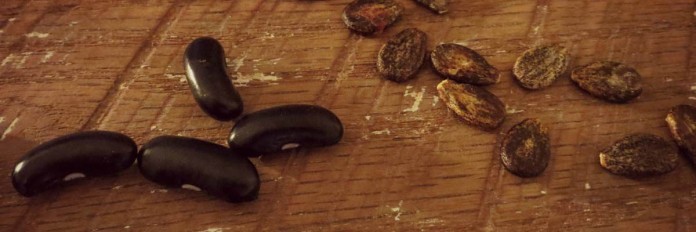It’s about time to start spring vegetable seedlings. These DIY projects will give you a head start on spring planting.
Newspaper seed starting containers

When you finish reading Farm and Dairy Newspaper, use it to make seed starting containers. Newspaper seed starting containers are biodegradable. They can be planted with the seedling in the same way as peat pots.
Supplies: newspaper, Mason jar, masking tape, nursery trays
- Fold one sheet of newspaper in half lengthwise.
- Place jar in the center of the paper and roll tight.
- Fold 2 inches inward. Press flat. Secure with a small piece of masking tape. This is the bottom of the container.
- Remove jar.
- Fold top 2 inches over and in to create a reinforced rim. Press to crease.
- Place containers in plastic nursery trays.
Make your own potting medium
Supplies: compost, potting mix, garden pH test, lime, sulfur, large bucket, shovel
- Combine 1 part finished compost and 1 part potting mix. Mix well.
- Test soil pH. 6 is a suitable pH for most seedlings, but some have special needs. Add a small amount of ground lime (alkaline) to increase pH. Add a small amount of sulfur (acidic) to lower pH. Retest after a few days and amend as required.
How to start seeds
Supplies: seed starting containers, potting medium, seeds, water, fertilizer or compost
- Read seed packet for planting information, paying close attention to depth.
- Fill seed starting containers ¾ full with potting medium.
- Sow seeds at appropriate depth. Cover loosely with potting medium.
- Moisten with water. Keep soil damp and warm, 80 degrees F, for good germination in 5-10 days.
- After germination keep soil moist but not damp. If you see mold on container or soil surface your soil is too wet. Water less and add a fan to increase air circulation.
- After germination reduce temperature to 70 degrees F.
- Give seedlings between 14-18 hours of light a day.
- Thin seedlings as required.
- Use diluted fertilizer or compost to feed seedlings as required.
- After the last frost, move seedlings outdoors and gradually increase exposure to the weather elements. The seedlings will be ready to transplant in the garden after 2 weeks hardening off.
Related: Starting seeds indoors: What you need to know Feb. 21, 2014











I like the explanation, thank you.